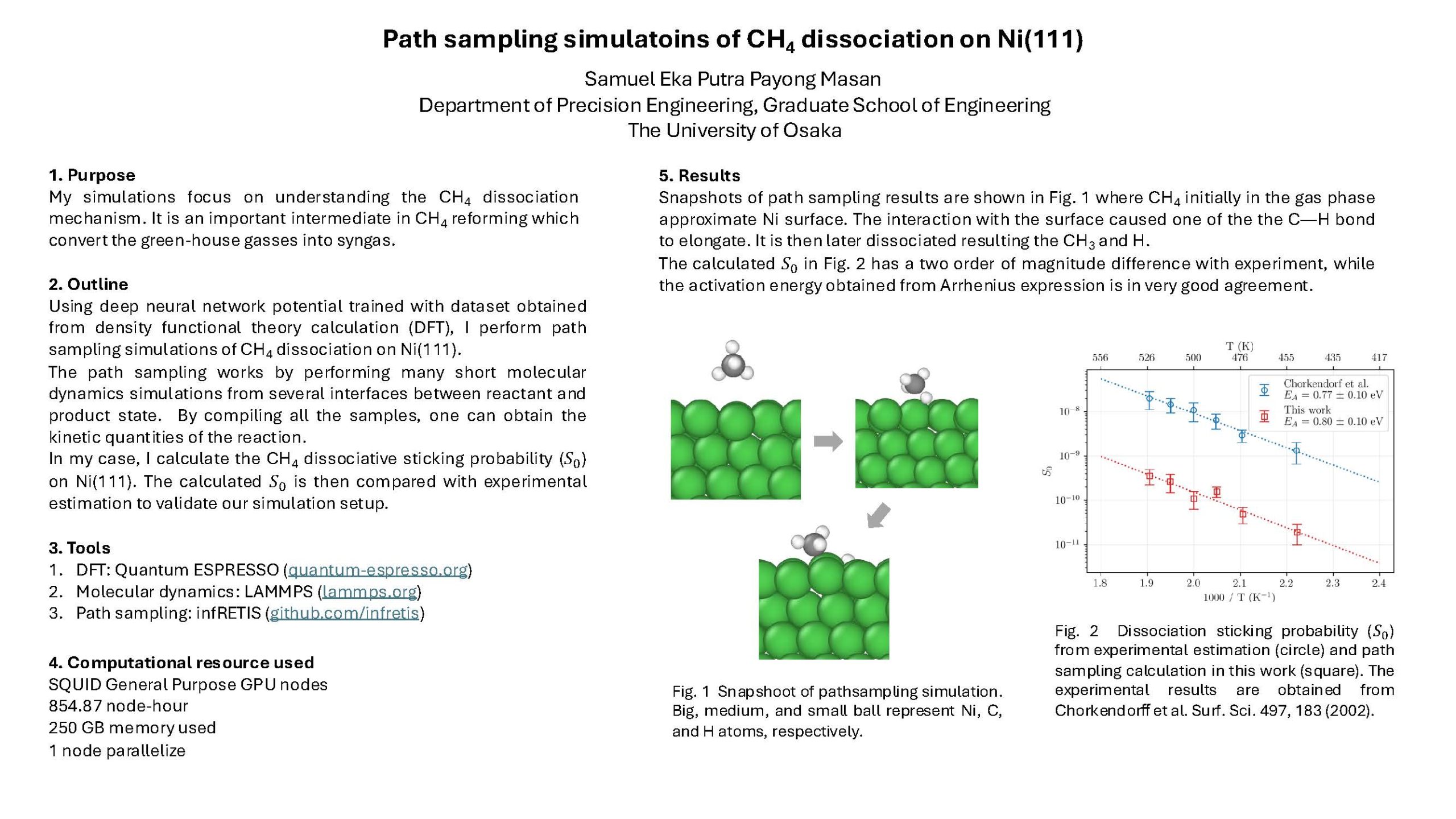Affiliation:Department of Precision Engineering, Graduate School of Engineering, The University of Osaka
Abstract:My simulations focus on understanding the CH4 dissociation mechanism. It is an important intermediate in CH4 reforming which convert the green-house gasses into syngas.
Using deep neural network potential trained with dataset obtained from density functional theory calculation (DFT), I perform path sampling simulations of CH4 dissociation on Ni(111). The path sampling works by performing many short molecular dynamics simulations from several interfaces between reactant and product state. By compiling all the samples, one can obtain the kinetic quantities of the reaction. In my case, I calculate the CH4 dissociative sticking probability (0) on Ni(111). The calculated 0 is then compared with experimental estimation to validate our simulation setup.
Snapshots of path sampling results show the detail mechanism where CH4 initially in the gas phase approximate Ni surface. The interaction with the surface caused one of the the C—H bond to elongate. It is then later dissociated resulting the CH3 and H.
The calculated 0 has a two order of magnitude difference with experiment, while the activation energy obtained from Arrhenius expression is in very good agreement.
Posted : March 31,2025


